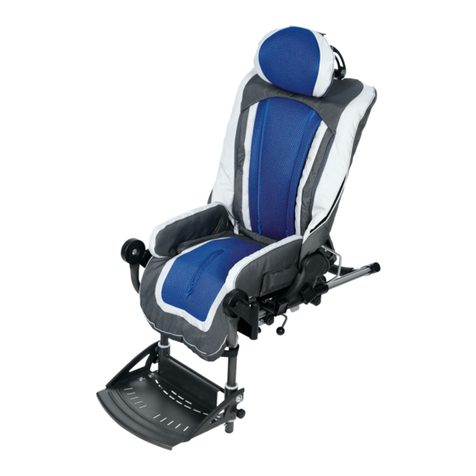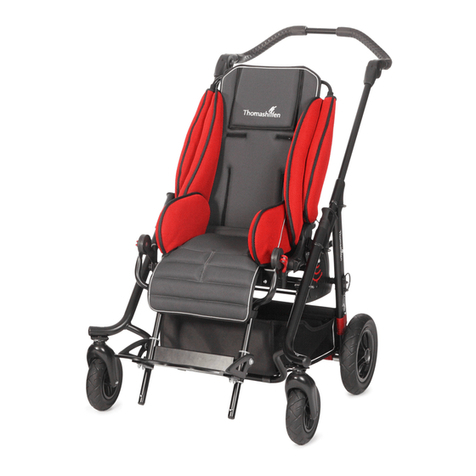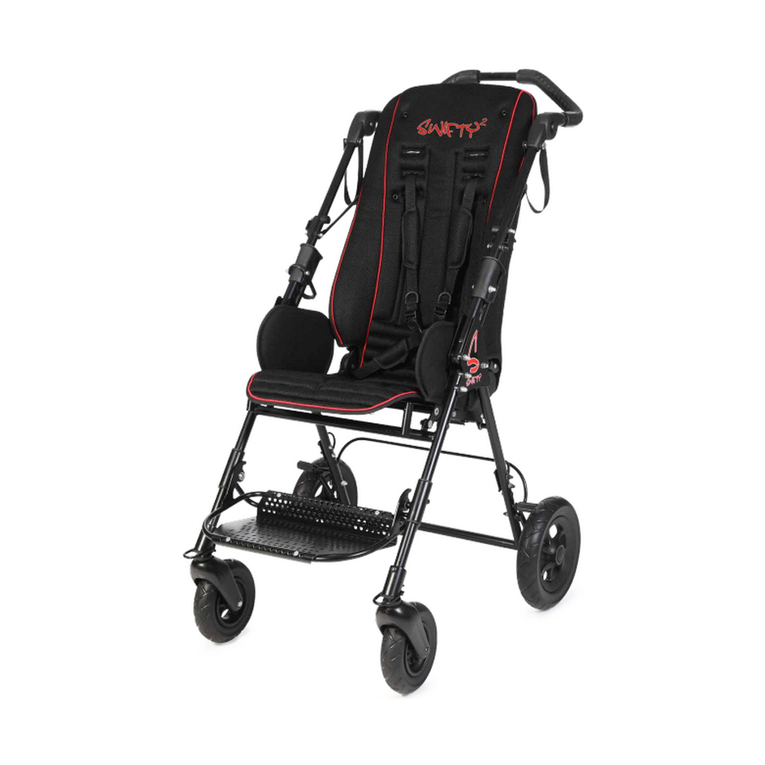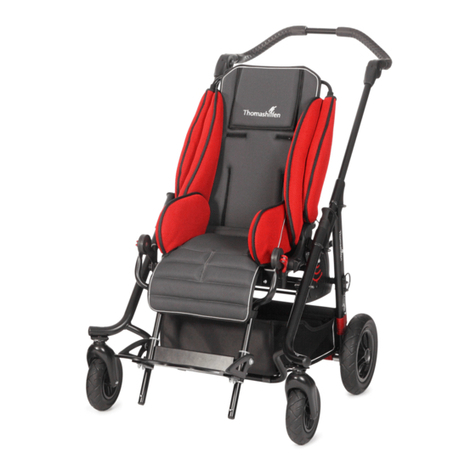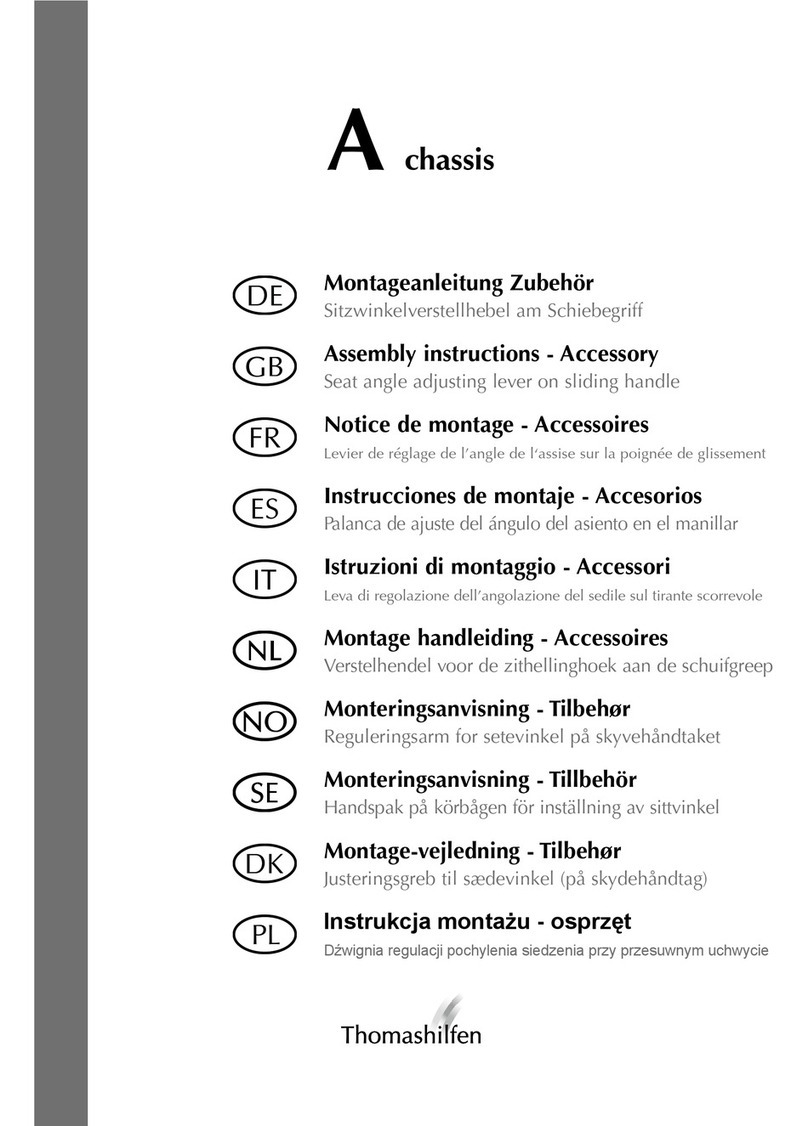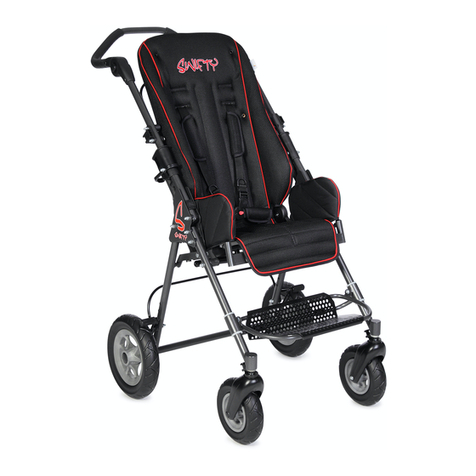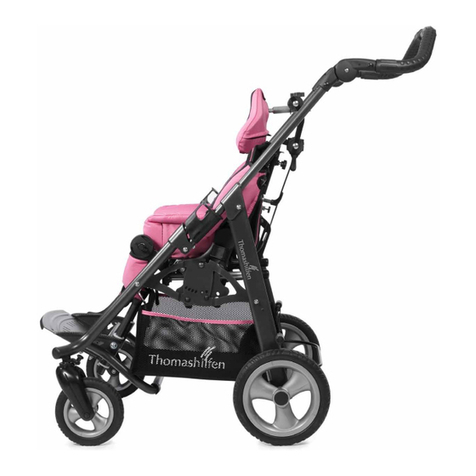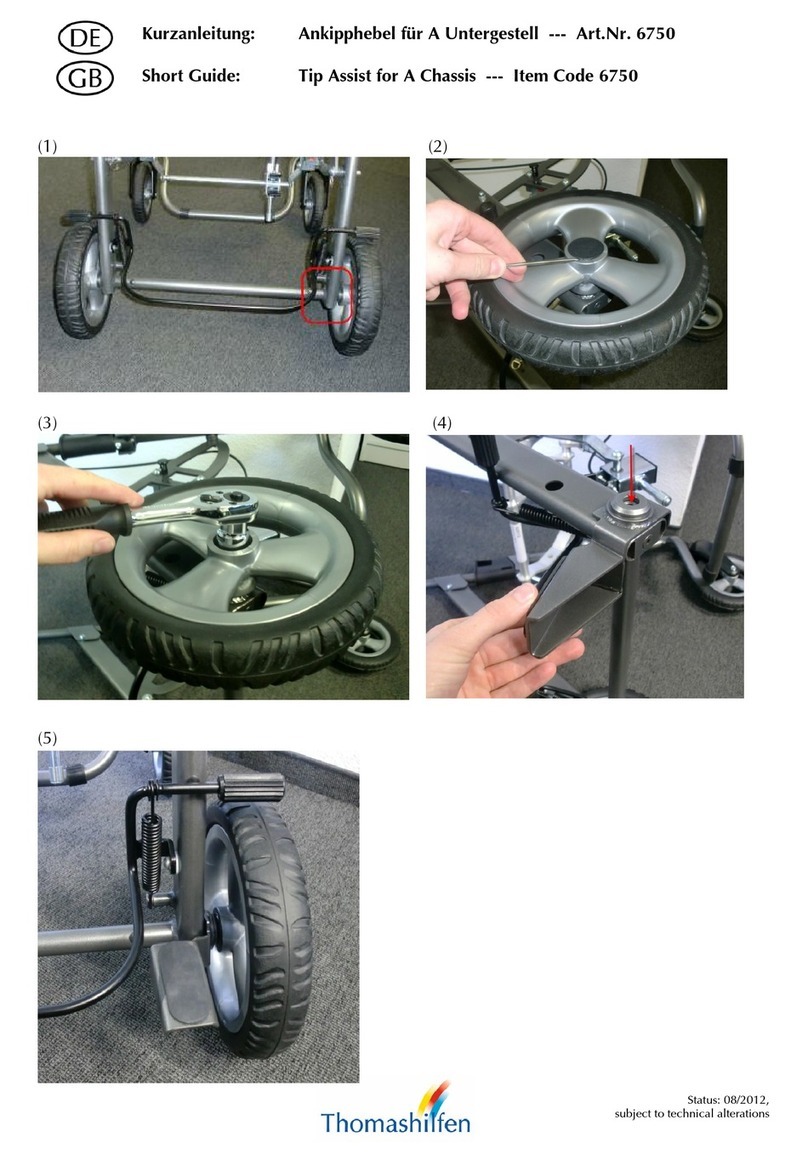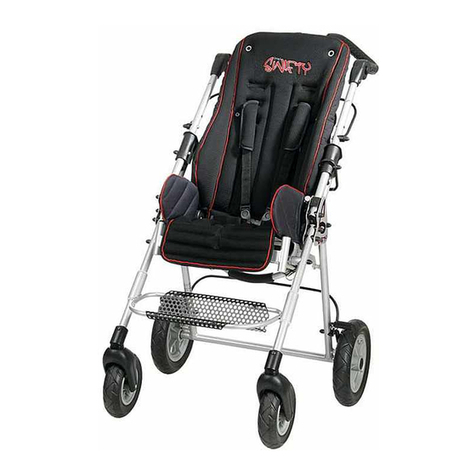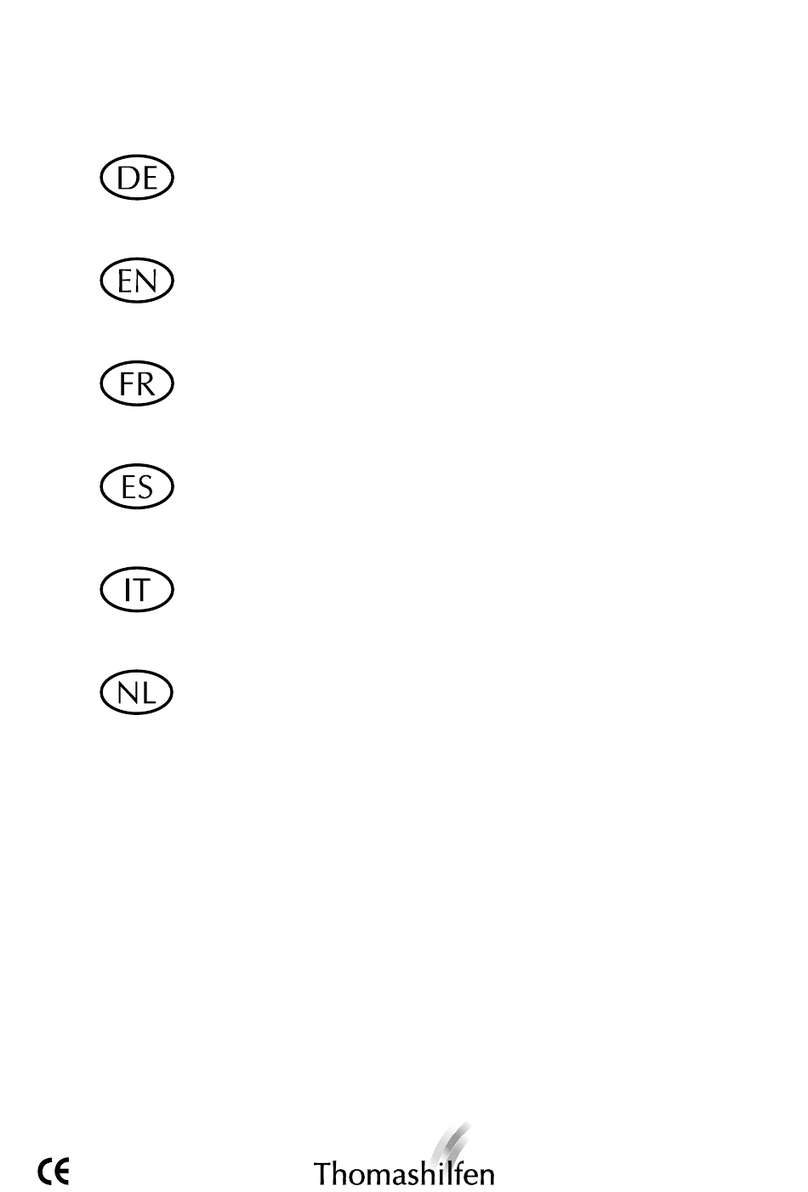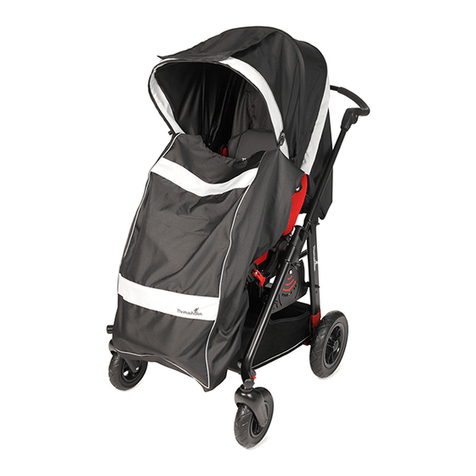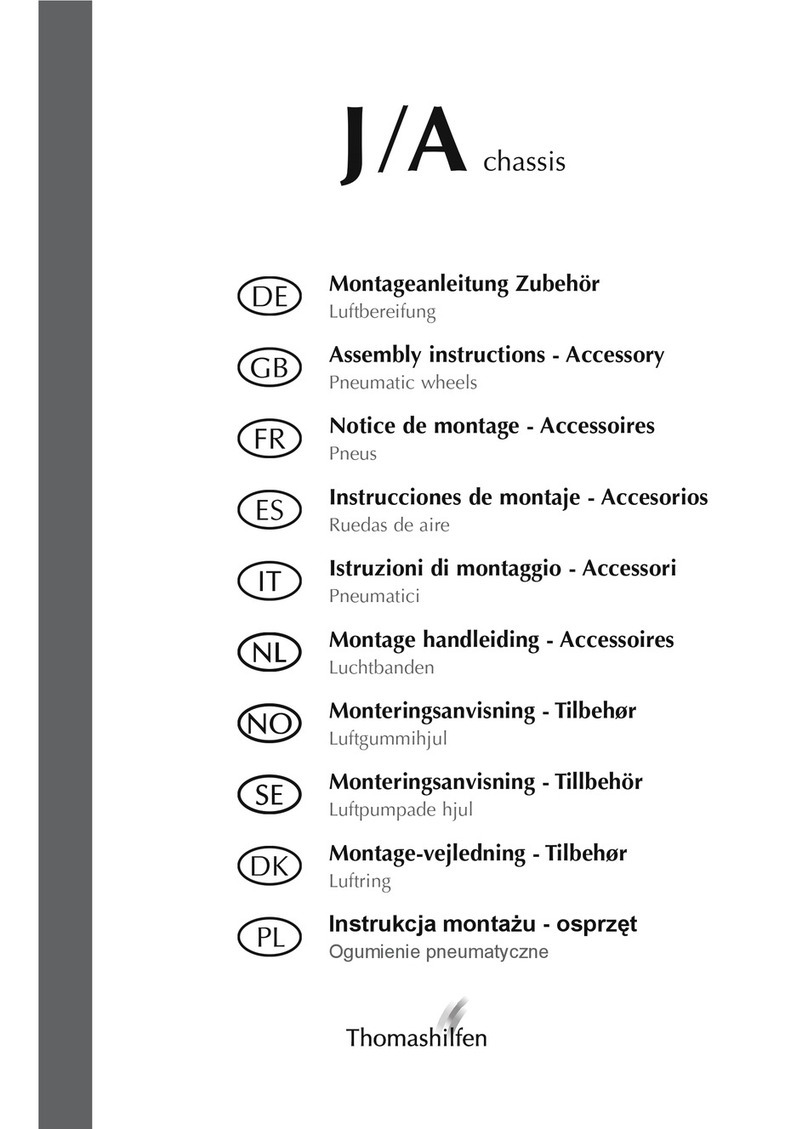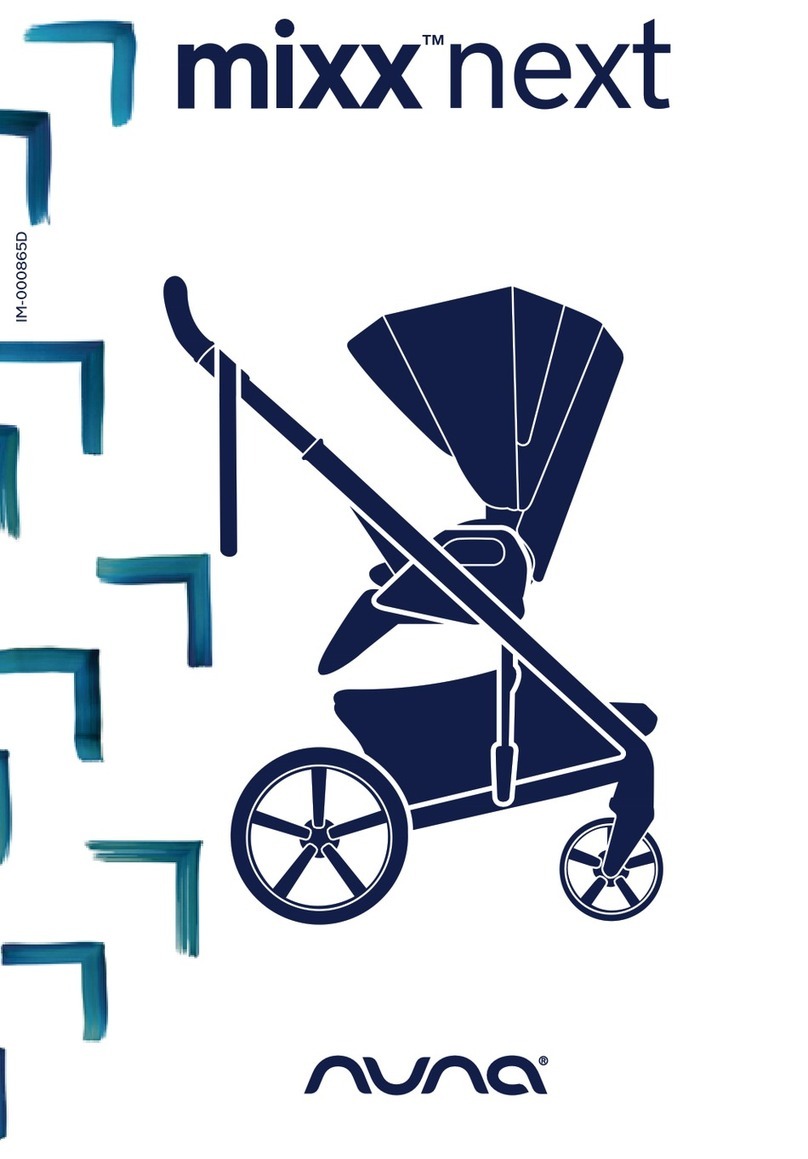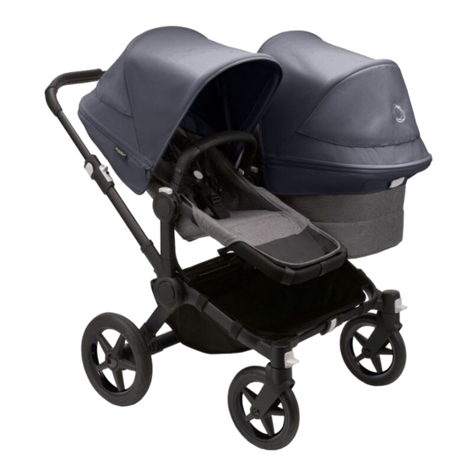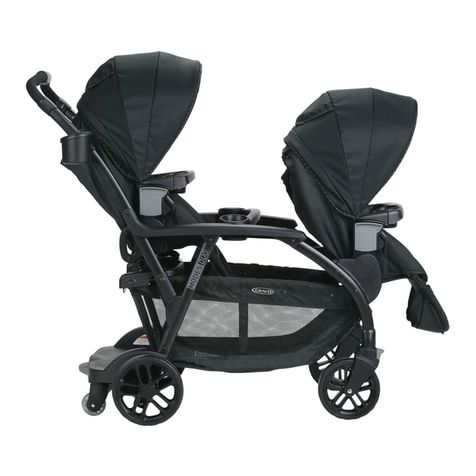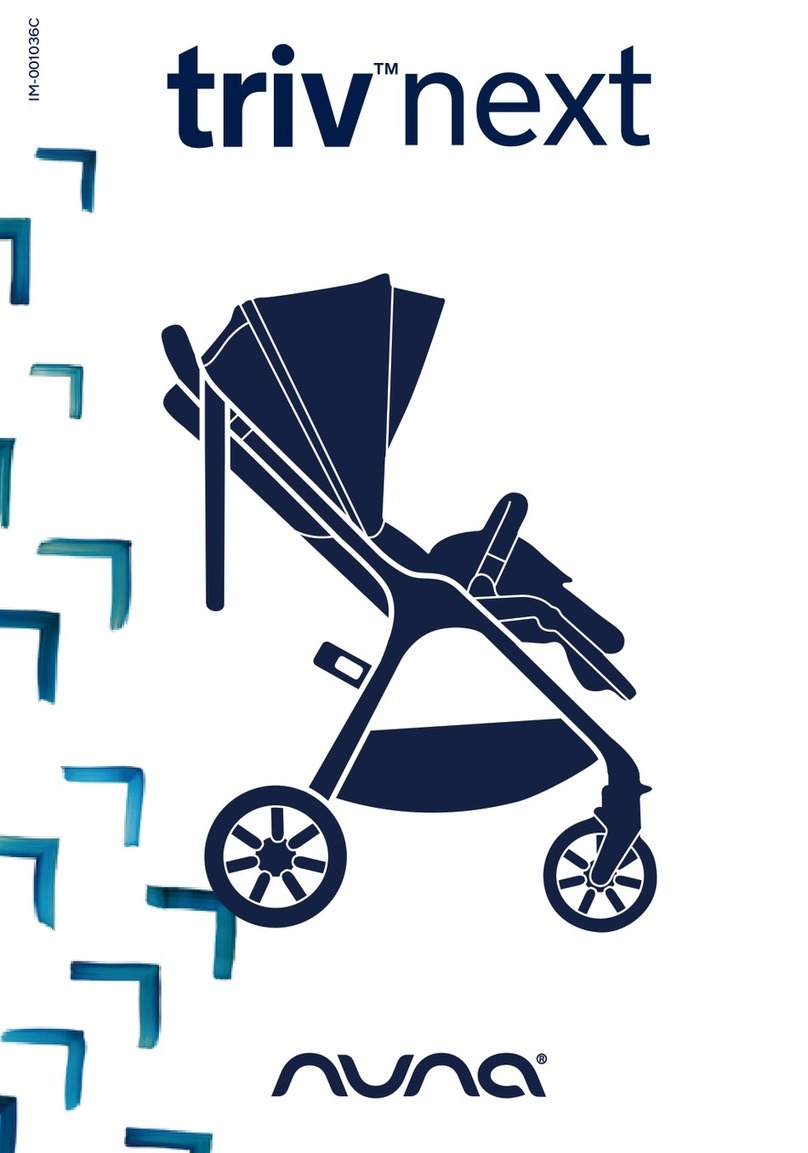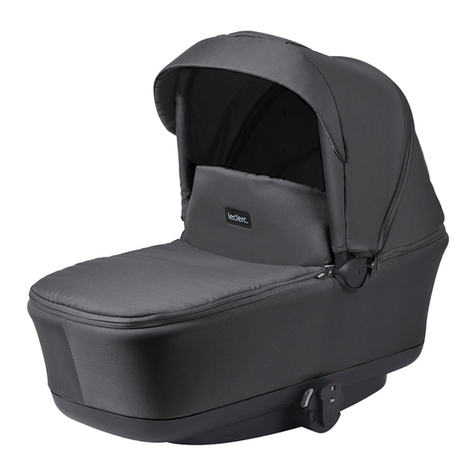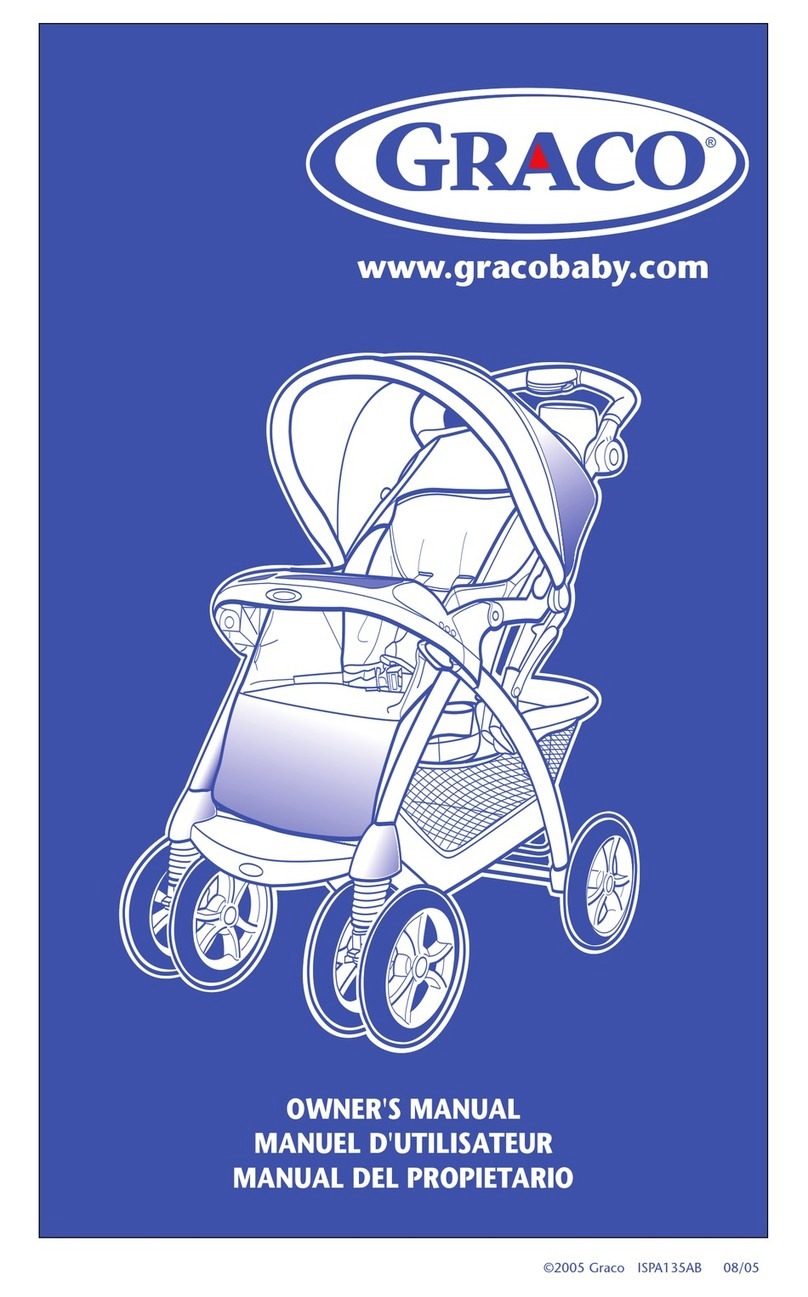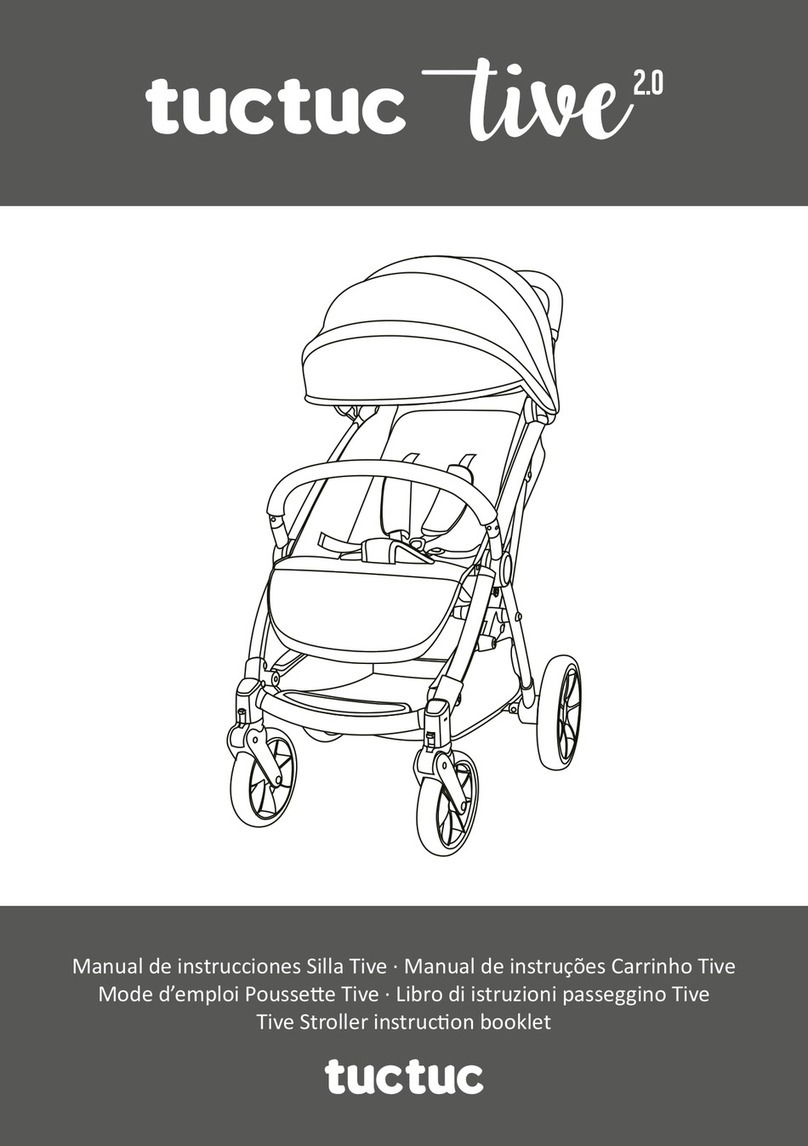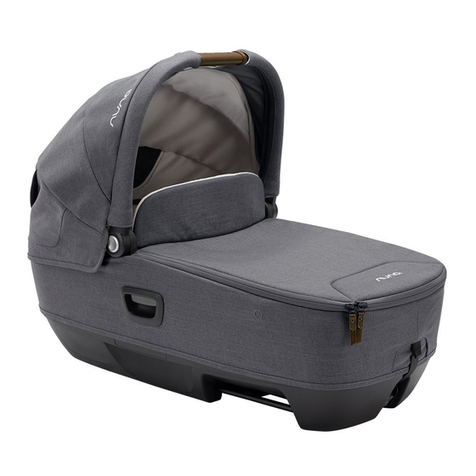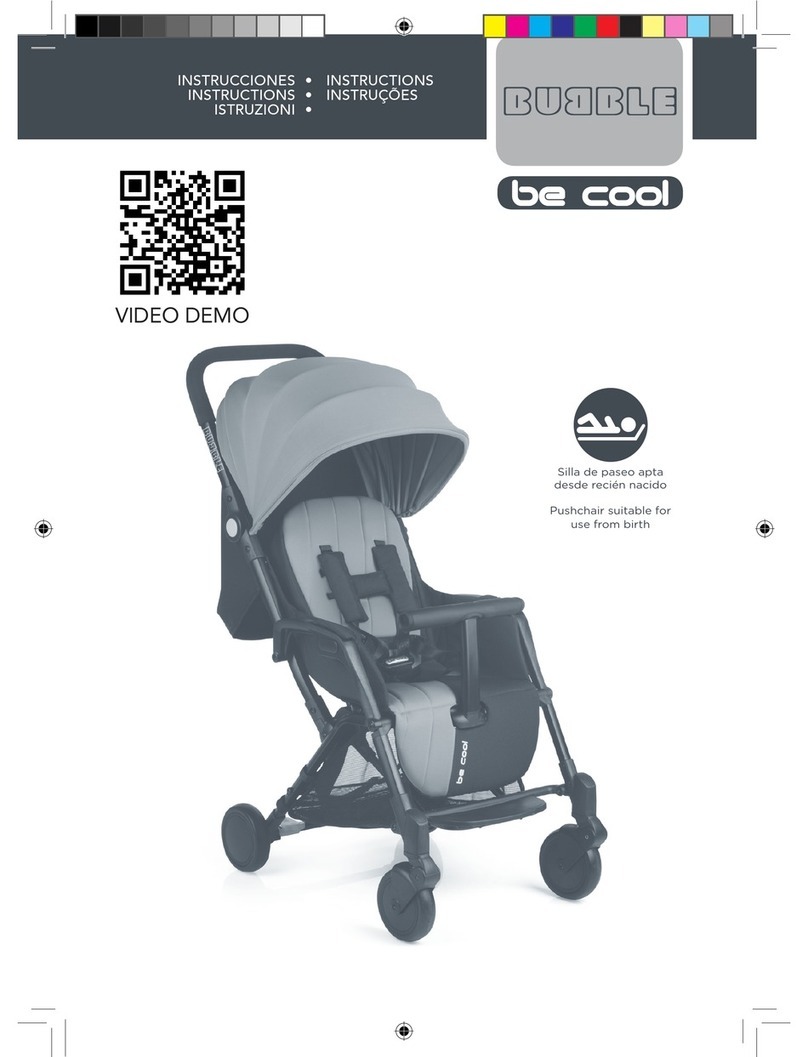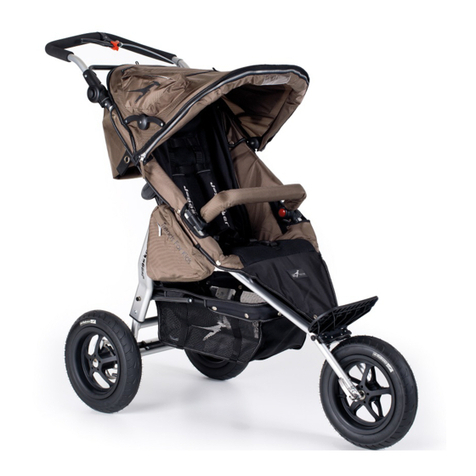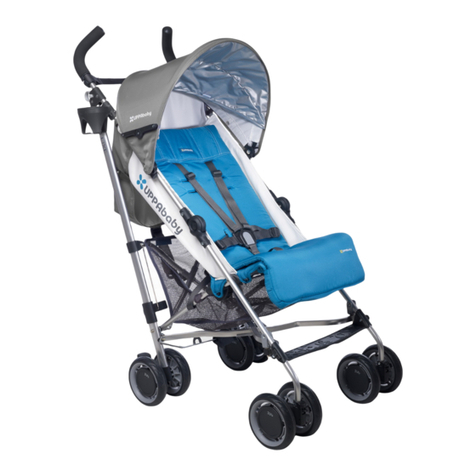Intended purpose and places of use
The tRide rehabilitation stroller is suitable for the transfer (at max. walking speed) of children with disabilities by their
parents or other approved assistants. It can be used both indoors and outdoors. The seat unit in connection with the
subframe may not be used for purposes for which they are not intended (e.g. for transporting other children, shopping,
etc.). The tRide rehabilitation stroller is approved for transporting children in motor vehicles/vehicles for people with
disabilities in accordance with ISO 7176-19.
Risks of use and contraindications
Using this product properly will prevent any risks from arising during use. There are no contraindications associated with
proper use. The upholstery material used during manufacture of the tRide has been classed as “fire-retardant” in
accordance with BS5852 part 1. The extent of resistance to ignition of the materials and assemblies used has been
determined in compliance with the standard and has been assessed as uncritical.
Safety checks and maintenance intervals
ÎA regular visual check of the operating controls and securing screws should be carried out by a trained specialis
every month.
ÎPlease remember to re-secure the screws, star handles and locking levers (hip angle adjustment) following
each adjustment.
Please observe the following notes on safety
ÎBefore using the tRide for the first time, read the operating instructions carefully – or have them read aloud to you if
you have difficulty reading. If you have lost the operating instructions you can download them at any time from the
download page of our website at www.thomashilfen.de
ÎWe recommend that you readjust the settings of the tRide at least every three months to suit the actual size of your
child’s body. This should be carried out with assistance from your therapist/orthopedic technician where appropriate.
ÎCAUTION: The gap between the chassis and the brake actuating rod presents a potential risk of entrapment of clothes
and limbs in the foot area.
ÎCAUTION: The gap between the seat and the chassis frame presents a potential risk of entrapment of clothes
and limbs in the seat area.
ÎCAUTION: The effect of solar radiation, electric heaters or other heat sources can cause the seat/rehabilitation stroller
to overheat. This presents a potential risk of burning to the back and legs upon contact! Always ensure therefore,
that the seat/rehabilitation stroller is not subjected so such sources of heat during use or storage and only use it after
it has cooled sufficiently.
ÎCAUTION: Wet or flat tires can affect the performance of the brakes. During a stop or longer pause you should secure
the rehabilitation stroller against unintended rolling by applying the foot brake.
ÎOnly lift the rehabilitation stroller by gripping securely welded or bolted components. (Front frame tube above the
front wheels, rear axle, push handles/push bar).
ÎEnsure that you do not injure yourself when folding and unfolding the rehabilitation stroller.
ÎPlease do not overload your tRide rehabilitation stroller and observe its maximum load limitation (see technical
specifications).
ÎWe recommend that you always secure the child using the 2-point pelvic belt or with another type of restraining
strap (available as an accessory) and that you never leave the child unsupervised in the rehabilitation stroller.
ÎNever allow your child to get into or out of the rehabilitation stroller unsupervised. If the footrest is overloaded
there is a risk of slipping or tipping over.
ÎHigh-visibility reflective clothing will make you and your child easier to see for other road users at night.
ÎHeavy bags or shopping nets attached to the rehabilitation stroller will increase the risk of it tipping over.
Instead use the basket or tray (available as accessories) on the subframe.
ÎWhen using the tRide please pay particular attention to the recommendations in the operating manual
regarding folding and unfolding the stroller.
ÎPlease keep your children away from the packaging – there is a risk of suffocation.
ÎOnly one child may be placed in the rehabilitation stroller.
ÎMarket experience to-date does not indicate any dangerous combinations of parts/accessories of the
tRide rehabilitation stroller.
Technical specifications
tRide 1 tRide 2
Seat depth 17 - 28 cm / 6.7 - 11“ 24 - 35 cm / 9.4 - 13.8“
Seat width 20 - 30 cm / 7.9 - 11.8“ 26 - 35 cm / 10.2 - 13.8“
Back height* 26 - 42 cm / 10.2 - 16.5“ 32 - 52 cm / 12.6 - 20.5“
Lower leg length 17 - 30 cm / 6.7 - 11.8“ 25 - 36 cm / 9.8 - 14.2“
Hip angle 90° bis 140° 90° bis 140°
Knee angle 90° bis 180° 90° bis 180°
Foot angle 78° bis 100° 78° bis 100°
Height adjustment arm support 10 - 14 cm / 3.9 - 5.5“ 12 - 18 cm / 4.7 - 7.1“
Seat tilt - in-space -10° bis +35° -10° bis +35°
Size of arm suport(w x h) 21 x 10 cm / 8.3 x 3.9“ 29 x 12 cm / 11.4 x 4.7“
Seat height 46 cm / 18.1“ 47 cm / 18.5“
Size of footrest (w x d) 29 x 18 cm / 11.4 x 7.1“ 33 x 21 cm / 13 x 8.3“
Overall dimensions of seat unit (l x w x h) 85 x 41 x 57 cm 98 x 46 x 46 cm
33.5 x 16.1 x 22.4“ 38.6 x 18.1 x 18.1“
Folded dimensions of seat unit (l x w x h) 63 x 36 x 38 cm 76 x 46 x 50 cm
24.8 x 14.2 x 15“ 29.2 x 18.1 x 19.7“
Weight (seat) 8,8 kg / 19.4 lbs 10,8 kg / 23.8 lbs
Push bar height 76 - 117 cm / 29.9 - 46.1“ 81 - 120 cm / 31.9 - 47.2“
Overall dimensions 75 x 60 x 77 cm / 81 x 73 x 79 cm
of chassis in running order (l x w x h) 29.5 x 23.6 x 30.3“ 31.9 x 28.7 x 31.1“
Folded dimensions of chassis (l x w x h) 79 x 60 x 38 cm 83 x 67 x 38 cm
31.1 x 23.6 x 15“ 32.7 x 26.4 x 15“
Overall dimensions of the tRide rehabilitation stroller, 90 x 60 x 101 cm 110 x 67 x 99 cm
ready for use (l x w x h) 35.4 x 23.6 x 39.8“ 43.3 x 26.4 x 39“
Folded dimensions of the tRide rehabilitation 81 x 60 x 63 cm 79 x 64 x 72 cm
stroller (l x w x h) 31.9 x 23.6 x 24.8“ 31.1 x 25.2 x 28.4
Wheel size (front (swivel wheels)) 7,5“ 7,5“
Wheel size (rear) 10“ 10“
Weight (chassis without seat unit) 8 kg / 17.6 lbs 9 kg / 19.8 lbs
Carring capacity (seat) 35 kg / 77.2 lbs 40 kg / 88.2 lbs
Carring capacity (chassis) 45 kg / 99.2 lbs 50 kg / 110.2 lbs
*without headreast
Setup and assembly
Settings/adjustments may only be undertaken by specialists that have received the requisite training or instruction (e.g.
a medical product consultant at a medical appliance specialist dealership).
Fitting/removal of accessories is carried out using commercially available standard tools. Separate assembly and
operating instructions are supplied with each accessory. If you do not have these instructions you can download them
at any time from the download page of our website at www.thomashilfen.de
Unfolding
Hold the rehabilitation stroller by its push handle, place your foot on the rear axle and then pull the handle upwards
(until the push handle audibly clicks into place) (fig. 1). If necessary, tilt the seat to the horizontal position (see “Adjusting
the seat tilt angle”). Then bring the backrest into the upright position (release the locking lever on the back of the seat
unit). The footrest must be secured at the toggle joints. To do this, place the ratchet joints one above the other and secure
with the screws (fromthe inside), the washers (from the outside) and the wing nuts (from the outside).
Folding
Bring the backrest into the prone position, release the toggle joints and swing the footrest towards the seat unit. Tilt the
seat to the horizontal position (see “Adjusting the seat tilt angle”) and then release the locking levers (pull upwards)
located on both sides of the subframe while at the same time pushing the push handle downwards and inwards toward
the frame (fig. 2).
CAUTION: Hold the frame securely – do not allow it to fall. Do not apply the foot brake; otherwise
there is a risk of deforming the wheels.
Note on folding: Ensure that the seat is always in the horizontal position when folding your tRide.










